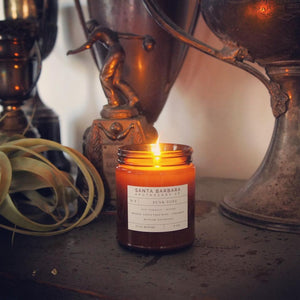Candles have been a source of light and ambiance for centuries. However, to make the most out of your candles, understanding the intricacies of candle burning is crucial. The ideal candle burn time should be a maximum of 4 hours, to avoid potential fire hazards and ensure safety as well as the best performance from your candle.
Whether you’re using scented candles for relaxation or pillar candles for decoration, knowing how to burn a candle properly ensures safety and maximizes burn time. When using a new candle for the first time, it is important to burn it for a certain duration to ensure an even burn and avoid wastage. The first time you light your candle, make sure you have 1-2 hours to let the wax melt all the way to the edges of the jar.
Understanding Candle Burning

Wax Varieties and Their Impact on Burn Time
Soy Wax: Known for its clean burn and excellent scent throw, soy wax is a popular choice for environmentally conscious consumers. It burns slower than paraffin wax, making it a cost-effective option. This is just one of the reasons all of our luxury candles are 100% soy wax.
Wax has a “muscle memory” and will burn in the same pattern every time, making the first burn crucial. Maintaining a flat wax surface is important to prevent memory rings and tunneling.
Wick Varieties and Their Role in Candle Flame
Cotton Wicks: Most common in the candle industry, cotton wicks are known for their stable and consistent burn. They need regular trimming to maintain an optimal flame.
Wooden Wicks: These wicks provide a unique crackling sound, reminiscent of a fireplace. They burn hotter and faster than cotton wicks and may require a larger candle container to manage the flame.
The expertise in candle-making is to match the right wick to the right wax and fragrance oils. Luckily for you, we have perfected this here at Santa Barbara Apothecary Company.
The Importance of the First Burn

How Long to Burn a Candle for the First Time
The first burn is the most critical aspect of candle maintenance. It establishes the "memory ring," ensuring that the candle burns evenly in future uses. Failing to achieve a full melt pool during the first burn can result in tunneling, where the candle burns down the center, wasting wax on the sides.
Light the candle for about 3 to 4 hours the first time to ensure a full melt pool. Burn the candle for at least one hour for every inch in diameter of the candle. Allow the wax to melt all the way to the edges of the jar or container to create a “candle memory.”
Tips for a Successful First Burn and a Clean Lit Candle
-
Trim the Wick: Always trim the wick to about a quarter inch. This helps in maintaining a controlled flame and reducing soot.
-
Burn Time: Ensure that the candle burns long enough for the wax to melt across the entire surface. This usually takes about 3-4 hours, depending on the size of the candle.
-
Environment: Place the candle away from drafts, fans, or air conditioners to prevent uneven burning.
Optimizing Burn Time for Performance and Safety
Limiting Burn Time to Prevent Overheating and Ensure a Safe Candle Flame
Candles should not be burned for more than four hours at a time. Extended burning can cause the wick to become unstable, leading to a larger flame and increased soot production. Always allow the candle to cool completely before relighting. Don’t burn your candle for longer than four hours at a time to prevent overheating. Prevent overheating by keeping the candle within your sight. Always keep a lit candle within your sight.
The Ideal Burn Time for Different Candle Types and Burning Candles
Burn candles for no longer than 4 hours per session, but this can vary depending on the type of candle. Candles burn roughly five to seven hours per ounce, with bigger candles lasting longer. Three wick candles in the same vessel as one wick candles will burn slower, not faster. Properly trimming the wick can prevent uneven burning, dripping, and sooting, ensuring a longer and more efficient burn time.
Candle Safety Essentials

Quick Safety Tips for Burning Candles
-
Proper Placement: Place candles on a heat-resistant surface, away from flammable materials.
-
Supervision: Never leave a burning candle unattended.
-
Extinguishing: Use a candle snuffer to extinguish the flame to prevent wax splatter.
Avoiding Common Safety Mistakes
Never leave a candle burning unattended, and avoid burning for more than 4 hours at a time. Carbon will collect on the wick if you burn your candle for too long, causing the wick to become unstable and the flame to get too large. Blowing out candles can cause wax to spray onto your face and smoke to fill the room, which can be harmful to your health. Handle liquid wax carefully after extinguishing a candle to prevent uneven melting and spills.
Key Takeaways for Optimal Candle Performance and Safety
Proper candle care is essential to get the most life out of your candle. Follow these guidelines from the first time you use your candle to ensure safe and enjoyable burning. Repurpose the jar after the candle has been completely used up to get the most bang for your buck and keep the glass out of the landfill. Store candles in a cool, dark location, away from direct sunlight, and replace the lid on the candle before storing to prevent dust and debris from getting into the wax and around the wick.
By following these guidelines, you can enjoy the full potential of your candles while ensuring safety. Proper candle care involves more than just lighting a wick; it's about understanding the science behind candle burning and taking the necessary precautions to prevent accidents. Store your candles properly and repurpose the jars to minimize waste and enhance your home decor.

